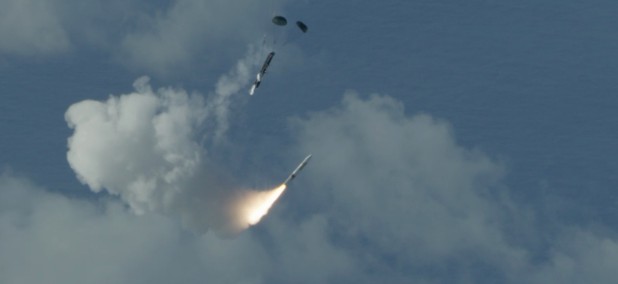If you want to understand the future of military strategy and industrial policy, it’s essential to look beyond the $879 billion topline of the Defense Department’s 2026 budget proposal. The real insights lie within the $179 billion earmarked for research, development, test, and evaluation (RDT&E). This section acts as a predictive index, revealing how the military plans to engage in warfare over the next five to 15 years. The latest RDT&E proposal highlights significant shifts towards software-defined weapons, agile acquisition models, space-based sensing architectures, and a growing emphasis on autonomy and electronic warfare.
The most telling indicators are not the areas of steady growth but the targeted surges that highlight where institutional urgency and emerging threats intersect. Among the notable shifts are investments in hypersonics, space-based intelligence, surveillance, and reconnaissance (ISR), and agile electronic warfare and drone development.
Emerging Technologies and Strategic Shifts
Hypersonics: Moving Beyond Experiments
The budget allocates $802 million to the Hypersonic Attack Cruise Missile, signaling a transition from experimental phases to potential field deployment. This aligns with the Air Force’s aim to develop a China-relevant, air-launched hypersonic standoff option. The investment suggests a strategic focus on enhancing rapid response capabilities in the face of evolving global threats.
Space-Based ISR: A New Frontier
The Space Force’s Ground Moving Target Indicator sees a dramatic increase from $256 million in FY25 to $1.06 billion in FY26. This shift marks a departure from traditional aircraft-based ISR systems towards orbital alternatives that are more resilient against anti-access environments. The move underscores the Pentagon’s commitment to maintaining superiority in space-based operations.
Missile Tracking and Low Earth Orbit
Investment in Resilient Missile Warning and Tracking in Low Earth Orbit (LEO) receives a significant $882 million boost. This reflects the maturation of tracking constellations designed to detect maneuverable hypersonic threats, emphasizing the importance of space in modern defense strategies.
Agile Electronic Warfare and Drone Development
The Army’s new RDT&E lines, receiving over $500 million, represent a shift towards Ukraine-style improvisational capabilities. This includes counter-unmanned aerial systems (UAS), electronic warfare (EW) spoofing, and loitering munitions. The focus is on adaptability and modular payloads, highlighting a move towards software-first configurations.
Software-Defined Weapons and AI Integration
While the budget lacks a specific line for software-defined weapons, there is strong evidence of a shift towards this model. Such systems promise greater versatility, faster adaptation, and potentially lower long-term costs. The Army’s funding for agile EW development and UAS-launched effects emphasizes adaptability and modularity, setting a new framework for future military engagements.
The “AI for Maneuver and Fires” program, funded at $88 million, indicates a strategic intent to integrate AI into operational command structures. This move reflects lessons learned from the conflict in Ukraine, where rapid software adjustments have been crucial for adapting to changing battlefield conditions.
“Drones are re-coded in hours to counter enemy jammers. EW units update techniques weekly, based on live adversary behavior.”
Implications for Defense Industry and Future Warfare
The FY2026 RDT&E budget represents a significant investment in agile, modular electronic warfare, and drone systems. This development signals a shift from traditional stovepipe systems to an architecture that embraces flexibility and rapid adaptation. The implications are profound, affecting tactical agility, industry participation, and procurement processes.
- Tactical agility becomes doctrine: Flexibility is now a critical metric.
- Opportunities for smaller firms: Modular kits open doors for software-native companies.
- Rolling procurement: Programs function as field labs, compressing innovation-to-application cycles.
This shift suggests that the future of electronic warfare and unmanned operations may lie in flexible, federated toolkits rather than massive programmatic structures. The R&D plan also reflects the divergent nature of U.S. competitors, with Russia’s counter-drone technologies and China’s need for orchestration driving adaptation.
Conclusion: A Strategic Move Towards Innovation
The Pentagon’s R&D budget proposal for FY2026 indicates a quiet but consequential shift in its approach to modernization. The focus is not merely on acquiring new technologies but on enabling existing systems to evolve. The budget reflects a strategic move to out-invent adversaries, betting on configuration speed, modularity, and code as the keys to future conflicts.
For defense companies, this shift suggests a transition towards a “defense software stack” model. Agile lines indicate a preference for continuous delivery pipelines, while open systems architecture implies competitive refresh. Companies capable of iterative, modular releases will likely shape future procurement preferences.
This directional move towards modular ecosystems is a positive signal for American dual-use companies, venture-backed startups, and commercial integrators. While it does not fully resolve the challenges of procurement cycles, it marks a clear shift towards a more flexible, innovation-driven defense strategy.
As Tatjana de Kerros, a dual-use and defense tech expert, notes, “This is the year the DOD began fighting with software.” The FY2026 budget proposal sets the stage for a new era in defense, where the ability to iterate and adapt quickly will define success on the battlefield.
About The Author
 UPenn Revises Lia Thomas Swimming Records Amid Federal Settlement on Transgender Athlete Participation
UPenn Revises Lia Thomas Swimming Records Amid Federal Settlement on Transgender Athlete Participation Viral Video Misrepresents Myanmar Quake Damage as Bangladesh Corruption
Viral Video Misrepresents Myanmar Quake Damage as Bangladesh Corruption Australia Tightens Childcare Safety Laws Amid Abuse Scandal
Australia Tightens Childcare Safety Laws Amid Abuse Scandal Stefanik Challenges Columbia University Over Alleged Civil Rights Violation
Stefanik Challenges Columbia University Over Alleged Civil Rights Violation Dalai Lama Confirms Continuation of Spiritual Lineage Amidst Political Tensions
Dalai Lama Confirms Continuation of Spiritual Lineage Amidst Political Tensions